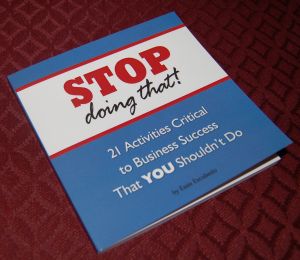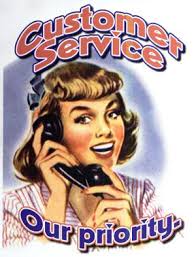A few days ago, Dan Greenfield asked for a few of my thoughts regarding what companies selling to small/medium sized businesses need to know. Today, I returned the favor. Big business doesn’t understand the SMB space as you’ll see from reading today’s post.
We are supporting this event later this year in Atlanta. Registration begins in July. Check out www.B2smbonference.com for updates. We will offer an early bird special and discounts for multiple ticket purchases.
1) Dan – you’ve successfully brought your Social Media makeover events to market. What prompted you to want to focus big companies attention on the SMB space with your October 2012 event in Atlanta?
I think there is a real need for the B-2-smb Social Media Conference.It has been my observation that social media teams at the corporate level have succeeded in making brand building, corporate communications and customer support top priorities.
On the other hand, I have talked to many enterprise companies at various stages in launching SMB initiatives, and interestingly, a lot of them have not fully factored the role of social media into the equation.
SMB sales teams in the field often lack the resources, expertise or mandate to tap the power of social media to engage customers where purchase decisions are being made. Meanwhile, data shows that small companies are increasingly relying on social media to aid in making purchasing decisions.
So this conference is a real opportunity to help give sales teams and channels partners the action plans they need to gain a competitive advantage through social media.
2) What is the number one problem that SMB’s have cited about how brands market to them?
A recent Inc Magazine survey revealed that more than half of the small business owners (SBOs) who responded don’t feel that big brands know how to market to them.
Many of these SBOs feel that companies fail to reach them on a personal level, the very level that is the psychological engine, motivation driver and competitive differentiator for this group.
This lack of personal interaction plays right into social media’s strength.
Social media is all about the power of engagement. It’s my belief that social media’s reliance on trust and sharing can help enterprise sales team forge stronger relationships with small companies and ultimately generate more sales.
3) Social media usage is on the rise, but are enterprise organizations using social media effectively to reach SMB’s? If not, why not?
Many of the enterprise organizations that I have spoken to are struggling with their overall SMB strategy, let alone their SMB social media strategy.
Enterprise organizations are entering the second phase of social media adoption. The first phase was using social to build a national, corporate presence. The next wave is to localize social media efforts to reach smaller customers. The problem is that the sale teams servicing local accounts are not prepared to take advantage of these efforts.
The problems vary from company to company, but some issues stand out: Enterprise organizations:
- want to manage social media efforts at the top and don’t want to give control of the brand to the local sales team.
- lack expertise to train local sales teams and channel partners.
- don’t have the budget to do so.
- don’t have the culture, systems and people in place to manage the process.
- don’t understand the extent that social media is being used by their customers and are therefore reluctant to expend resources.
Another challenge is “old school” members of the local sales team are still resistant to social media – skeptical of its usefulness and believing that traditional efforts continue to work just fine. Of course, this will change as a new generation of small business owners and salespeople emerge who are more accustomed to using social media.
4) Are SMB’s using social media to make their purchasing decisions? What are key factors that enterprise marketers need to keep in mind when marketing to the businesses in this space?
While still in its infancy, social media is becoming increasingly more important for SMBs who are understaffed and operate under the mandate of “doing more with less.”
SMB decision-makers are utilizing the social media’s low cost tools and channels to help make purchase decisions – relying on online discussions with peers, customers and key influencers for valuable advice and content.
For future success, sales and marketing teams need to supplement traditional sales channels with social media efforts that include online forums, blogs and discussion groups.
Social media is accelerating the purchase decision making of SMBs and enabling them to purchase more technology faster. The growing level of trust in social media peer groups is now certainly a factor in many B2B business arenas.
AMI Partners found that an estimated 4.8 million SMBs in the U.S. and 76 percent use some form of social media for business use. This represents $180 billion in information technology spend and 48 percent used some form of social media in the purchase decision-making process.
One study I found showed that 41 percent of respondents are more likely to think favorably of vendors who provide business management advice, 39 percent are more likely to visit that vendor’s site, and 32 percent are more likely to do business with that vendor.
Another study found that search engines remain the primary resource for SMBs to find information about products and services. However, once most SMBs have search results in hand, many rely on word-of-mouth referrals when making their purchasing decisions. The main word-of-mouth referrals come from blogs and forums (34 percent) and third-party reviews (35 percent).
All of which leads to a second point: When using these channels, the enterprise organizations need to understand the rules of engagement. The goal is not to sell and advertise; it is to share information and be perceived as a partner trying to help with useful information.
The “non-selling” sales approach is very different, but if done correctly will provide enterprise organizations a new point of entry to prospects. As you said Barb“, “While it sounds a little counterintuitive, you don’t use these tools to spit out sales spam. That only annoys people and harms you rather than helps you. In this world, you are judged by the value you give before expecting an immediate return. Be relevant and share valuable content related to your industry and people will take notice.”
5) With so many conferences to choose from, especially those that have a social media focus, what is different about The B-2-smb Social Media Conference?
In coming up with the idea for the B-2-smb Social Media Conference, I discovered that there are plenty of events that broadly address the latest and greatest in social media from a technical and marketing perspective. There are also many others that focus on helping small businesses with social media. But I have come across very few that specifically target ways to help the enterprise use social media reach the SMB market.
In many ways, the SMB market is a new frontier. The fruit is higher on the tree, but businesses with fewer than 500 employees make up 99.7 percent of all employer firms. The SMB market provides a great opportunity to those that understand how to engage and sell to it. In time, social media will only continue to grow in influence.
6) Give us a hint…what topics are on the agenda?
The agenda is pretty straightforward and intended to meet two goals:
- Helping attendees understand how SMBs are using social media to make purchasing decisions (including how they find the right technology solutions and how they identify and interact with online influencers to validate those solutions)
- Helping attendees increase the impact of their social media efforts to identify leads, engage small and mid-market businesses with relevant information and track and measure results
The morning is devoted to getting into the mindset of a SMB and understanding how enterprise companies are successfully using social media to reach their target customer.
The second half of the day begins by getting down to helping attendees understand how to reach prospects which is your specialty area, Barb. I appreciate your willingness to moderate a panel and share your expertise in social selling. We will then explore ways to help the enterprise understand the social media habits of existing customers to reveal what they are doing online and why. We conclude by building an action plan a successful social media strategy.
7) Who benefits from attending the conference and what are the key learning’s they can expect to take with them at the end of the day?
This conference is ideal for:
Sales and marketing teams and channel partners at mid and enterprise level companies who want to:
- Better connect with the SMB market via social media
- Integrate social media into an overall marketing and sales strategy
- Localize corporate social media efforts
- Enterprise level companies who want to exhibit their social media thought leadership
- Consultants and vendors trying to identify and market their social media tools and services to the SMB market
- Mid-sized businesses that want to make connections with big businesses
8) I know you are looking for sponsors, who in particular will benefit from sponsoring the event?
This conference is a great sponsorship opportunity for:
- Corporations with social media tools, technologies and platforms that help enterprise-level companies reach and serve the SMB market
- Vendors, consulting firms or agencies with social media expertise and/or SMB experience that helps enterprise-level companies market to SMBs, manage the process, and measure the results
- Companies wanting to build your presence in the SMB market
- Companies wanting to showcase your social media prowess with SMB customers
9) What’s the event date, the cost and how do people register?
Registration begins in July. Check out www.B2smbonference.com for updates. We will offer an early bird special and discounts for multiple ticket purchases.
************************************************************************************************
The producer of the B2SMB Social Media Conference is Dan Greenfield, president of
LISTEN Interactive - a social marketing and PR consultancy. A veteran communications
executive, Greenfield has extensive experience working with corporate and political
leaders, senior management and teams charged with executing strategy and delivering
results in the Internet, telecommunications, environmental and health care fields.
Greenfield is creator of the SMB Social Media Makeover Forum where small businesses
receive expert social media advice from successful brands. Previously he produced a
series of PR+MKTG Camps around the country working with hundreds of PR and
marketing professionals to help them better understand how to market, manage and
measure the social engagement process.







